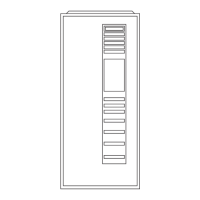6. Reconnect drain cap to inducer housing.
7. Replace main furnace door.
8. Propylene glycol need not be removed before restarting
furnace.
WIRING DIAGRAM
See Fig. 16 for Wiring Diagram.
TROUBLESHOOTING
Use the Troubleshooting Guide, the status code LED on the
cotntrol and the Component Test to isolate furnace operation
problems.
STATUS CODES
For an explanation of status codes, refer to service label located on
back of main furnace door or Fig. 17 and the Troubleshooting
Guide. The stored status code will NOT be erased from the control
memory if 115- or 24-v power is interrupted.
NOTE: Removing the blower access door will open the blower
access door switch and terminate 115-v power to the control.
To read current status code, remove main furnace door. The status
code LED can be viewed through the sight glass on the blower
access door.
NOTE: NO thermostat signals may be present at control and all
blower off delays must be completed to view previous codes.
Make sure limit switch or flame rollout switch wire does not
contact any metal component, such as gas valve. If wire is
shorted, 3-amp fuse on furnace control will blow.
To retrieve previous codes, remove 1 of the red main limit or flame
rollout switch wires for 1 to 4 sec until the LED light goes out, then
reconnect it. (Do not leave red wire disconnected for longer
periods of time as the control will assume an overtemperature
condition exists and will respond with blower operation.) This
places the control in the status recall mode and displays the last
code stored in memory.
Record the code. After the last code is displayed the control will
perform the component test, and then return to normal standby
mode.
COMPONENT TEST
Blower access panel door switch opens 115-v power to
control board. No component operation can occur. Caution
must be taken when manually closing this switch for service
purposes. Failure to follow this warning could result in
electrical shock, personal injury, or death.
Use the Component Test to check furnace components for proper
operation. To initiate the component self-test sequence, shut off
the room thermostat or disconnect the ″R″ thermostat lead. Briefly
(approximately 2 sec) short the TWIN/TEST terminal to the C
OM
24V terminal. The status LED will turn off. The test sequence will
be as follows:
1. LED flashes last status code, or code 11, 4 times. Record this
status code for further troubleshooting.
2. The inducer will start and continue to run until test is over.
3. Hot surface igniter (HSI) is energized for 15 sec, then
de-energized.
4. Blower operates on continuous FAN speed for 10 sec, then
turns off.
5. The blower motor operates on HEATING speed for 10 sec,
then turns off.
6. The blower motor operates on COOLING speed for 10 sec,
then turns off.
7. Inducer turns off.
8. The gas valve and humidifier terminal HUM are not energized
for safety reasons.
11
→
→

